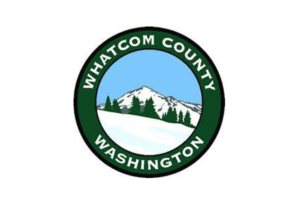As mentioned in Part 1 of this post, these four aspects of a business plan can be the most compelling if well researched and presented:
- Value Proposition: a strong problem/solution statement
- Addressable Market: a realistic estimate of the size of your market
- Sales Plan or Pipeline: a solid plan for hitting your revenue projections
- Sources and Uses: a good understanding of how much and the types of funding you need
Part 1 discusses Value Proposition and Addressable Market, and this Part 2 continues with Sales Plan and Sources and Uses.
3. Sales Plan or Pipeline
A clear picture of how you will hit your projections, especially if you’re new and don’t have a track record of revenue growth, can build confidence in your forecast. This is called a sales plan or customer pipeline. I recently heard an investor describe a deal in which the financing was justified primarily on due diligence of the company’s sales plan.
The pipeline is an exhaustive list of the customers in your target market that you plan to reach in the projected year. For a traditional food business doing direct selling, each customer is assigned:
- a probability that they will place an order (conversion rate),
- an estimate of the size of the order,
- a probability that they will reorder (repeat rate),
- and frequency and size of the reorders.
The sum-product of these estimates – Σ customers × conversion rate × initial order size × repeat rate × # reorders per year × reorder size – should match or come very close to your annual projections. Here is a simple example I did a while back (note this does not break out repeat sales).
At first the probabilities and order sizes will be estimates, ideally based on discussions you’ve had with potential customers about their interest in your product. Over time, these estimates will be running averages of your own conversion rates, repeat rates and order sizes for different types of customers. There are many excellent customer relationship management (CRM) tools available to begin tracking customer acquisition data, and some are free.
There are two incredibly powerful aspects of this customer pipeline. First, it demonstrates to investors that you have a clear plan for driving sales to meet your projections. Second, it gives you and your sales team quantifiable goals and the knowledge of exactly who to call on, in what priority, over the course of the year. In our work with startups we find that entrepreneurs dislike doing this because it’s so inaccurate. But accuracy isn’t the point. The point is to have a concrete, actionable plan so that you have a realistic chance of making your numbers.
4. Sources & Uses
Last in this list of priorities is how much you need from funders and how you will use it. This so-called Sources & Uses analysis matches the categories of expenses with the types of funding you seek. I moderated an investor pitch session a few years ago and was surprised that none of the presentations included this. All had a crisp value proposition and clear plans for expansion, but none detailed exactly what they were asking investors to fund, and most didn’t mention how much they needed.
How much should you ask for? If you are a startup or starting a new project there will be four general categories of expense.
- Assets – the property, facilities and equipment you must purchase in order to start and operate your business
- Startup costs – additional pre-opening and/or research & development expenses incurred before you open your doors and begin generating revenue
- Working capital – the cost of goods you will incur before you receive cash for products sold
- Operating losses – the operating expenses you will incur before you break even (the point at which sales volume covers operating costs)
The first two are pretty easy to quantify; however, it is important to be as comprehensive as possible. For example, many underestimate pre-opening expenses with respect to staffing, not recognizing that one or two individuals may need to be hired and paid well to get the business ready for operation.
The second two are not quite as straightforward. The amount of working capital you need is determined by (1) the amount of inventory you want to have on hand at any given time, and (2) the lag time between when you need to pay your suppliers (accounts payable) and when you will receive cash from your buyers (accounts receivable). If you are committed to paying your growers within 10 days of receiving their goods, but are getting paid by your customers within 28 days, you’ll need at least 18 days of working capital to cover this difference. Many businesses estimate approximately 2 to 3 months of working capital when determining how much funding they need.
The best way to estimate operating losses is to develop a monthly pro forma P&L that forecasts sales, gross margin, SG&A and net income. Push out your projections until you reach breakeven sales volume. Use this P&L to estimate your monthly cash flow (adding back depreciation and amortization to your net income), and then sum up the total monthly losses until the projected point when you will break even and generate profits on a sustained basis. Many entrepreneurs will add 20% or more to this estimate as the future is unpredictable and raising money is time-consuming.
What should you ask investors to fund? Different types of expenses are appropriate for different kinds of funders:
- Grants are great for pre-opening and R&D expenses, the riskiest categories.
- Debt is ideal for assets because they can be used as collateral.
- Working capital can sometimes be financed through a revolving loan, which can use the receivables as collateral.
- Equity is often used to cover operating losses.
Identifying the appropriate sources of funds for each expense category will also be based on legal entity and profitability goals. For example, equity investors are focused on companies that have revenue and growth potential, and would be less interested in a food hub aiming to operate at break even. Additionally, nonprofits and some cooperatives may also be designed to operate with grant support ongoing.
When talking to investors, clearly communicate how much you want to raise, what you’ll use the money for, and your general strategy for raising that money. This provides funders with confidence that the investment they make in you will be part of a broader set of resources you will be accessing, and that you understand what your business needs to be successful.


